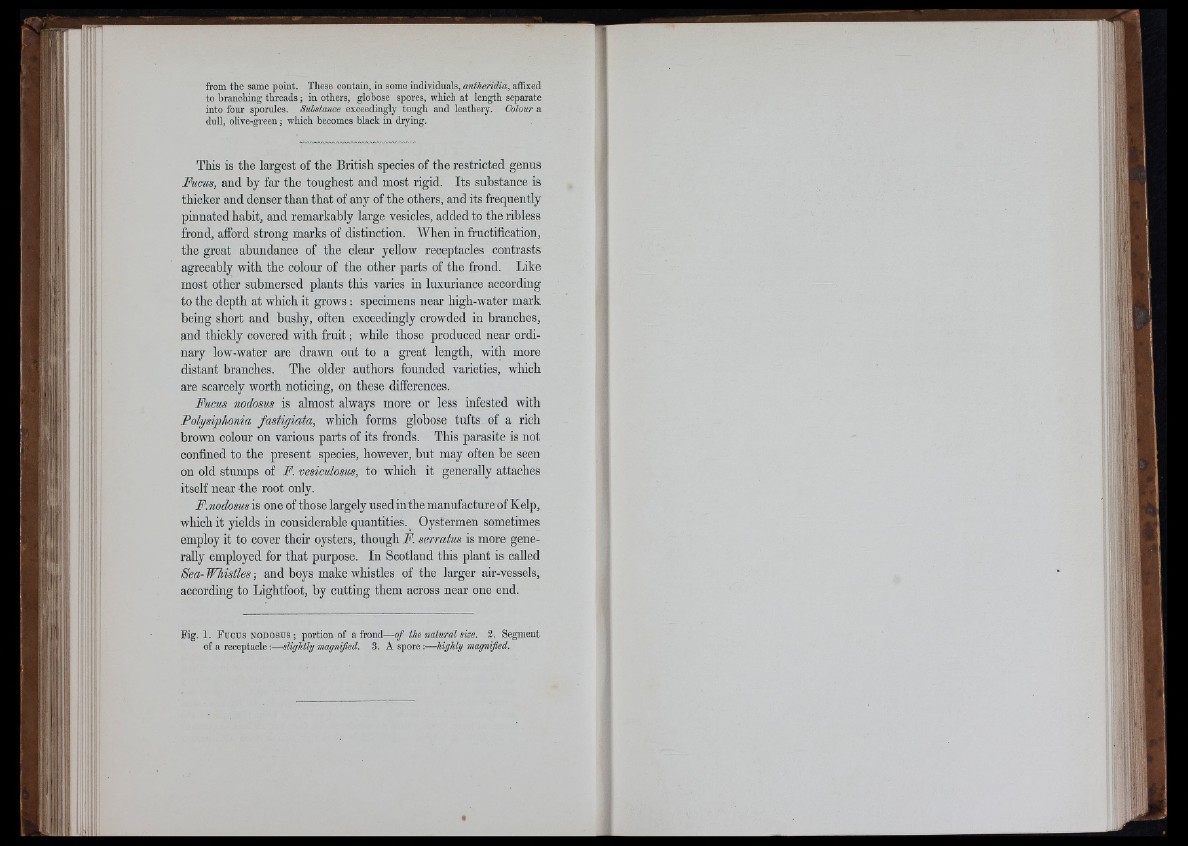
n
i l l
from the same point. These contain, in some individuals, antheridia,, affixed
to branching threads ; in others, globose spores, which at length separate
into four sporules. Substance exceedingly tough and leathery. Colour a
dull, olive-green ; which becomes black in drying.
This is the largest of the British species of the restricted genus
Pucus, and by far the toughest and most rigid. Its substance is
thicker and denser than that of any of the others, and its frequently
pinnated habit, and remarkably large vesicles, added to the ribless
frond, afford strong marks of distinction. When in fructification,
the great abundance of the clear yellow receptacles contrasts
agreeably with the colour of the other parts of the frond. Like
most other submersed plants this varies in luxuriance according
to the depth at which it grows : specimens near high-water mark
being short and bushy, often exceedingly crowded in branches,
and thickly covered with fru it; while those produced near ordinary
low-water are drawn out to a great length, with more
distant branches. The older authors founded varieties, which
are scarcely worth noticing, on these differences.
Fucus nodosus is almost always more or less infested with
Polysiphonia fastigiata, which forms globose tufts of a rich
brown colour on various parts of its fronds. This parasite is not
confined to the present species, however, but may often be seen
on old stumps of F. vesiculosus, to which it generally attaches
itself near the root only.
F. nodosus is one of those largely used in the manufacture of Kelp,
which it yields in considerable quantities. _ Oystermen sometimes
employ it to cover their oysters, though F. serratus is more generally
employed for that purpose. In Scotland this plant is called
Sea- Whistles; and boys make whistles of the larger air-vessels,
accordmg to Lightfoot, by cutting them across near one end.
f t 'I
:i;|
-■ il
i d V d
A
' IJ
Fig. 1. Fücus NODOSUS; portion of a frond—of t
of a receptacle ;— slightly magnified. 3. A spore :
size. 3. Segment